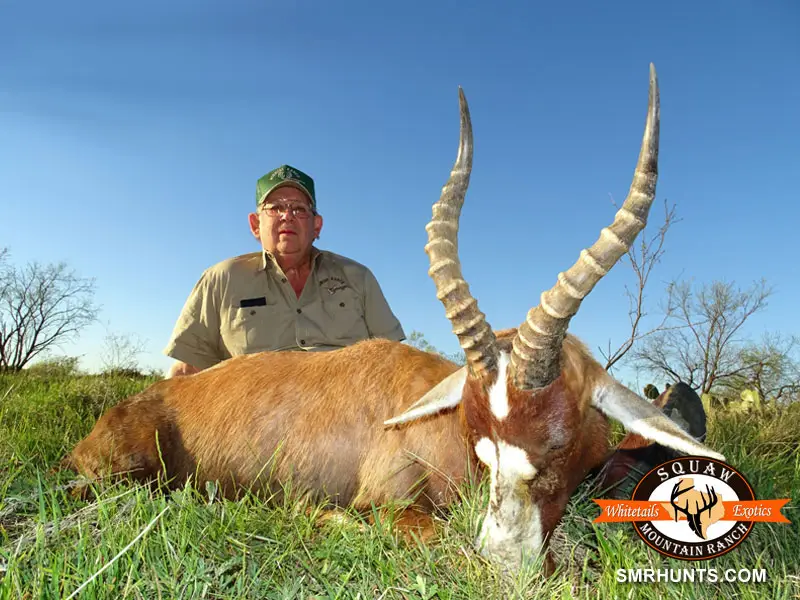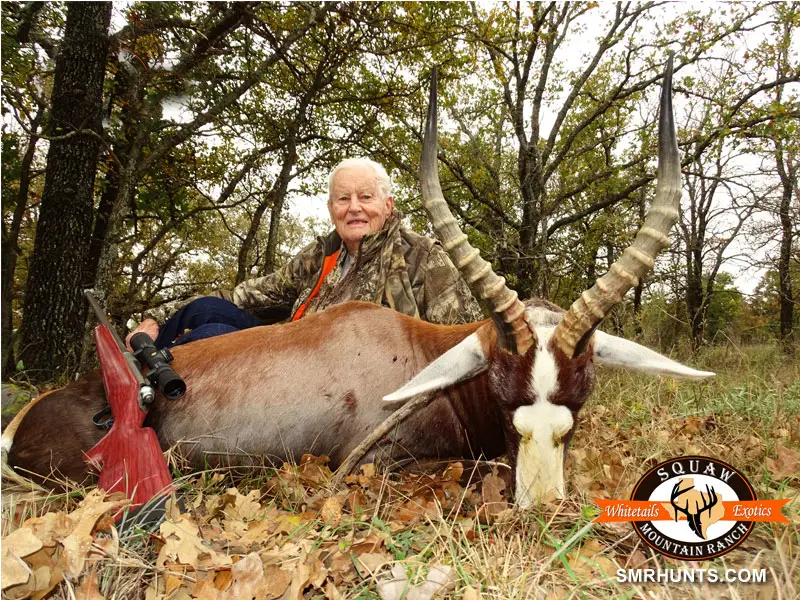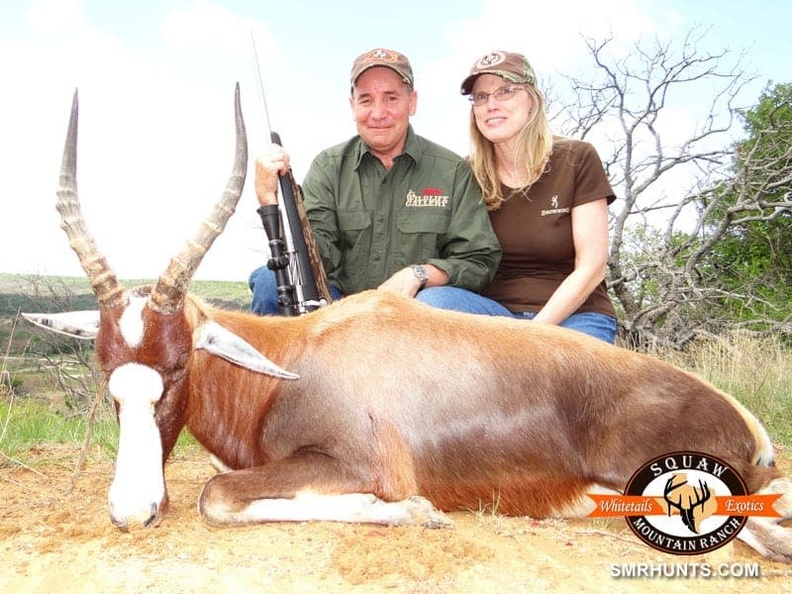
Blesbok Hunting in Texas
Squaw Mountain Ranch Allows Hunters The Opportunity To Hunt A Trophy Blesbok In Texas In A Beautiful Setting.
The habitat and terrain on Squaw Mountain Ranch affords hunters the ability to safari style hunt from high rack vehicles, hunt from a modern comfortable blind, or even engage in a good old fashion spot and stalk hunt for your Trophy Blesbok.
We have a great herd of Blesbok on the ranch with excellent genetics producing amazing Trophy Blesbok every year. There are no seasonal restrictions on hunting Blesbok in Texas, which makes it a suitable trophy to hunt year round.
Squaw Mountain Ranch not only allows hunters to choose their method of hunting Trophy Blesbok, but their method of take as well. We have expert hunting guides that will customize each hunters experience according to hunters experience and preference of hunting technique and weapon.
Trophy Blesbok Hunters can choose to Bow Hunt, Rifle Hunt, Pistol Hunt, or Black Powder Hunt. We also offer long range shooting instruction. We can help there as well. We accommodate all types of hunters and even hunters with physical disabilities.
The Blesbok that we offer to hunt from our herd on Squaw Mountain Ranch have horns that range from 30-39 inches. We cater to the hunters needs to harvest a Trophy Blesbok that the hunter will proud to hang in their trophy room.
We cater to each client individually during their Blesbok Hunt at SMR. We ensure a fair chase hunt that will provide each Blesbok Hunter with a formidable Trophy that they will be proud to hang in their Trophy Room. Squaw Mountain Ranch prides itself on providing outstanding Trophy Blesbok Hunts at an affordable price compared with other ranches, while giving the hunter a five star experience and service second to none
FAQs About Blesbok Hunting
Learn more about Blesbok Hunting below.
The best time to hunt antlered deer species is September through Jan. However, axis deer hunting is best from late May through September. Hunting all horned exotic species, including sheep and antelope, can be done year round.
Yes, you can hunt Blesbok in Texas at Squaw Mountain Ranch.


